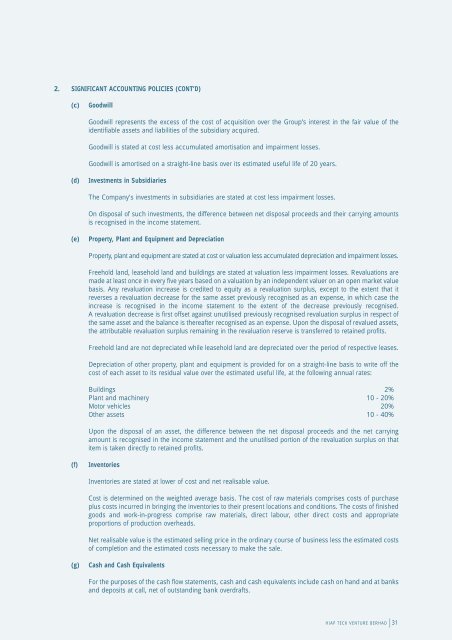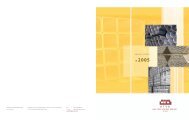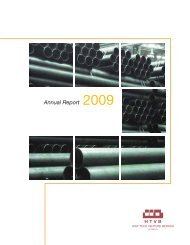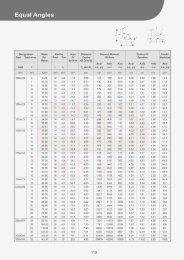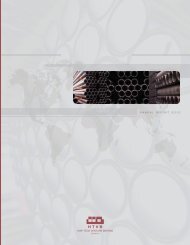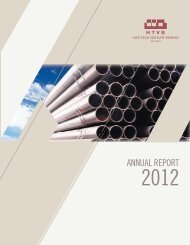2004 - Hiap Teck Venture Berhad
2004 - Hiap Teck Venture Berhad
2004 - Hiap Teck Venture Berhad
Create successful ePaper yourself
Turn your PDF publications into a flip-book with our unique Google optimized e-Paper software.
2. SIGNIFICANT ACCOUNTING POLICIES (CONT’D)<br />
(c)<br />
Goodwill<br />
Goodwill represents the excess of the cost of acquisition over the Group’s interest in the fair value of the<br />
identifiable assets and liabilities of the subsidiary acquired.<br />
Goodwill is stated at cost less accumulated amortisation and impairment losses.<br />
Goodwill is amortised on a straight-line basis over its estimated useful life of 20 years.<br />
(d)<br />
Investments in Subsidiaries<br />
The Company's investments in subsidiaries are stated at cost less impairment losses.<br />
On disposal of such investments, the difference between net disposal proceeds and their carrying amounts<br />
is recognised in the income statement.<br />
(e)<br />
Property, Plant and Equipment and Depreciation<br />
Property, plant and equipment are stated at cost or valuation less accumulated depreciation and impairment losses.<br />
Freehold land, leasehold land and buildings are stated at valuation less impairment losses. Revaluations are<br />
made at least once in every five years based on a valuation by an independent valuer on an open market value<br />
basis. Any revaluation increase is credited to equity as a revaluation surplus, except to the extent that it<br />
reverses a revaluation decrease for the same asset previously recognised as an expense, in which case the<br />
increase is recognised in the income statement to the extent of the decrease previously recognised.<br />
A revaluation decrease is first offset against unutilised previously recognised revaluation surplus in respect of<br />
the same asset and the balance is thereafter recognised as an expense. Upon the disposal of revalued assets,<br />
the attributable revaluation surplus remaining in the revaluation reserve is transferred to retained profits.<br />
Freehold land are not depreciated while leasehold land are depreciated over the period of respective leases.<br />
Depreciation of other property, plant and equipment is provided for on a straight-line basis to write off the<br />
cost of each asset to its residual value over the estimated useful life, at the following annual rates:<br />
Buildings 2%<br />
Plant and machinery 10 - 20%<br />
Motor vehicles 20%<br />
Other assets 10 - 40%<br />
Upon the disposal of an asset, the difference between the net disposal proceeds and the net carrying<br />
amount is recognised in the income statement and the unutilised portion of the revaluation surplus on that<br />
item is taken directly to retained profits.<br />
(f)<br />
Inventories<br />
Inventories are stated at lower of cost and net realisable value.<br />
Cost is determined on the weighted average basis. The cost of raw materials comprises costs of purchase<br />
plus costs incurred in bringing the inventories to their present locations and conditions. The costs of finished<br />
goods and work-in-progress comprise raw materials, direct labour, other direct costs and appropriate<br />
proportions of production overheads.<br />
Net realisable value is the estimated selling price in the ordinary course of business less the estimated costs<br />
of completion and the estimated costs necessary to make the sale.<br />
(g)<br />
Cash and Cash Equivalents<br />
For the purposes of the cash flow statements, cash and cash equivalents include cash on hand and at banks<br />
and deposits at call, net of outstanding bank overdrafts.<br />
HIAP TECK VENTURE BERHAD<br />
31


